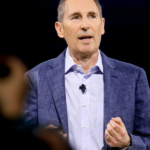Instead, the bulk of new jobs came from industries that do not necessarily reflect the administration’s priorities. The health care sector added 51,000 jobs in April, while the private education and health services component accounted for 70,000 new hires, despite fears about what cuts to federal funding will mean for both industries.
Those nuances didn’t stop the administration from celebrating the report.
“Wages are continuing to rise, and labor force participation is increasing,” White House press secretary Karoline Leavitt said in a statement to Fortune. “This is exactly what we want to see. More Americans working for higher wages. More winning is on the way!”
Average hourly earnings grew 0.2% in April, below Wall Street’s 0.3% forecast; annual wage growth was 3.8%, unchanged from March.
Traders also scaled back their bets on Fed rate cuts by selling bonds, which would become more attractive relative to new debt if the central bank slashes interest rates. The yield on the two-year Treasury, which rises as the price of the bond falls and is closely tied to the Federal funds rate, surged roughly 13 basis points as of Friday afternoon. Jay Hatfield, the CEO of Infrastructure Capital Management, told Fortune the chances of a June rate cut seemed remote.
“The only thing that’s going to get them off the dime, because they’re all labor market economists, is a weakening in the labor market,” he said of the Fed.
Of course, a good jobs report can’t be all bad news for the president. After all, there are no signs of tariff stress hitting the labor market yet, said Jamie Cox, managing partner at Harris Financial Group in Richmond.
“If you are going to embark on a trade war and your economy is consumption based, this is the leverage you want,” he wrote in a note Friday.
“If the labor market holds up and the Trump administration walks back the most egregious tariffs, the economy could skirt a deep recession,” Jeffrey Roach, chief economist at broker-dealer and wealth manager LPL Financial, wrote in a note Friday.
“It would be astonishing if payrolls in the logistics, manufacturing, and retail sectors were unscathed by the looming decline in goods entering U.S. ports over coming weeks,” Samuel Tombs, chief U.S. economist at Pantheon Macroeconomics, wrote in a note Friday.
That might begin to show up on next month’s report.









